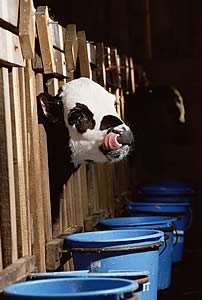 |
|||||||||
|
|||||||||||||||||||
|
|
Once-A-Day Calf Milk Feeding Can Save £6 per Calf Tom Warren from Bonanza Calf Nutrition says that the majority of UK calf producers are still wedded to twice-a-day milk feeding, but a less labour-intensive, more cost-effective once-a-day system can deliver the same performance benefits.
Switching from a twice-a-day milk feeding system to once-a-day could save UK calf rearers around £6/calf and cut labour input to as little as 23 seconds/calf/day. “There’s plenty of research around that shows that calves can be fed successfully on once-a-day feeding systems. Once-a-day feeding retains many of the advantages of twice-a-day, but involves significantly less labour, uses less milk replacer and promotes earlier weaning,” he pointed out. However, Tom Warren stresses that to secure the cost savings from once-a-day systems, rearers must feed the right milk replacer product. “Once daily feeding is best suited to either whole milk or milk replacers based on skim milk powder. This is because skimmed milk forms a cheesy curd or clot in the calf’s stomach that takes over 14 hours to be digested. This clot forms using casein protein produced in the cow’s udder specifically for the calf. Milk replacers that claim to contain milk, but make no reference to skim milk powder or buttermilk are unsuitable for once-a-day feeding because they contain no casein protein. These products are usually based on whey and vegetable proteins and are flushed through the calf’s digestive system in only a few hours, so are wholly unsuitable for a once-a-day feeding regime,” he says. Tom Warren adds that choice of fat and fat level in a specialist once-a-day milk replacer is also important. “By including high quality skimmed milk in our replacers we do not need to push up fat levels. A high fat content tends to slow the movement of the milk through the digestive system – which at first sight might seem helpful for a once-a-day system – but high fat levels will delay dry feed intake and weaning, which you don’t want. But by incorporating four vegetable oils along with the natural milk emulsifiers found in buttermilk you can improve fat digestion and encourage dry feed intake. “With the nation under quota and milk prices relatively firm, it makes no economic sense on most farms to feed whole milk to calves. In addition, calves on whole milk systems need to be 2-3 weeks old before they start on once-a-day unless milk replacer is added to the whole milk to increase the solids content of the feed. Weaning is also delayed using whole milk as dry feed intakes are lower. “But with the right milk replacer, a once-a-day feeding system works fantastically well for both the calf and the rearer. Quite apart from the obvious labour benefits, calves eat more dry feed and their rumens develop more quickly. This allows weaning to occur a week or two earlier, saving the farmer even more time, as well as cutting the amount of milk replacer used. Compared with a standard twice daily feeding regime, we estimate once-a-day will save at least 4kg of milk replacer worth at least £6 per calf.”
|
||||||||||||||||||

|
|
||||||||||||||||||
| home | agri-services | pedigree
pen | news | dairy | beef | machinery property | organisations | site map |
|||||||||||||||||||

